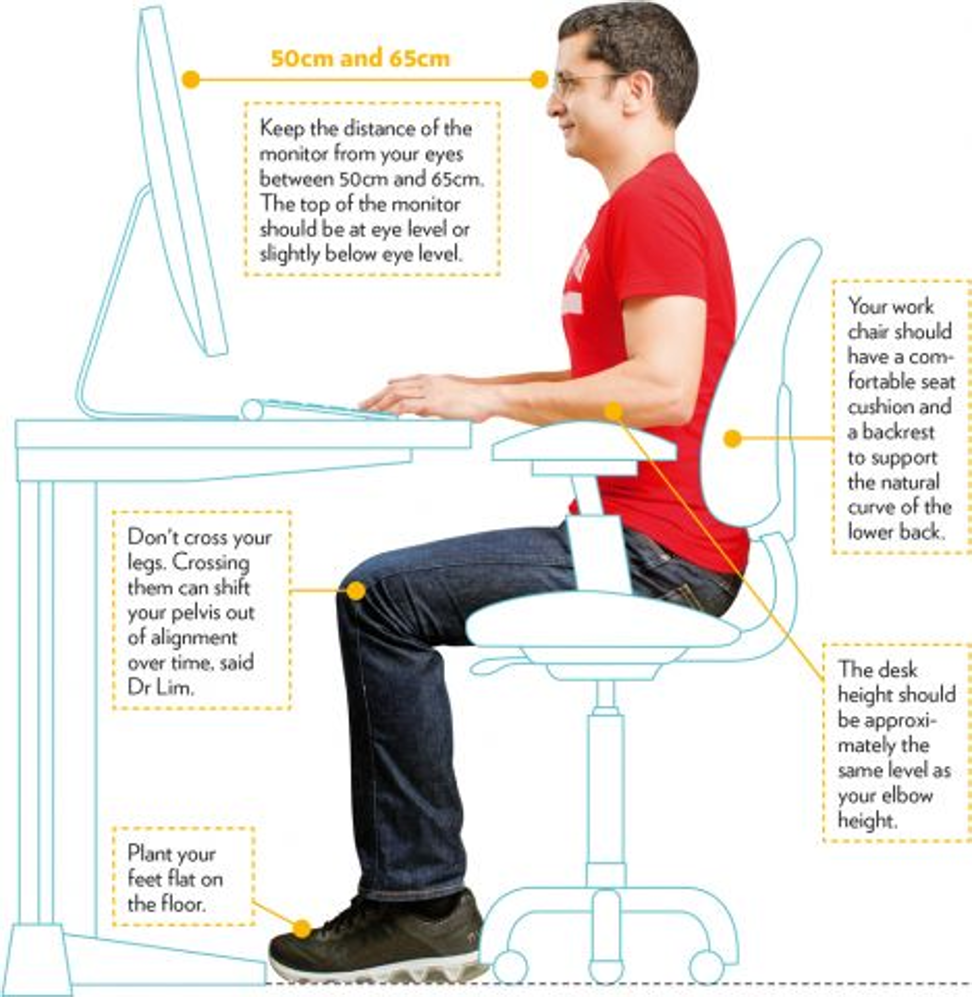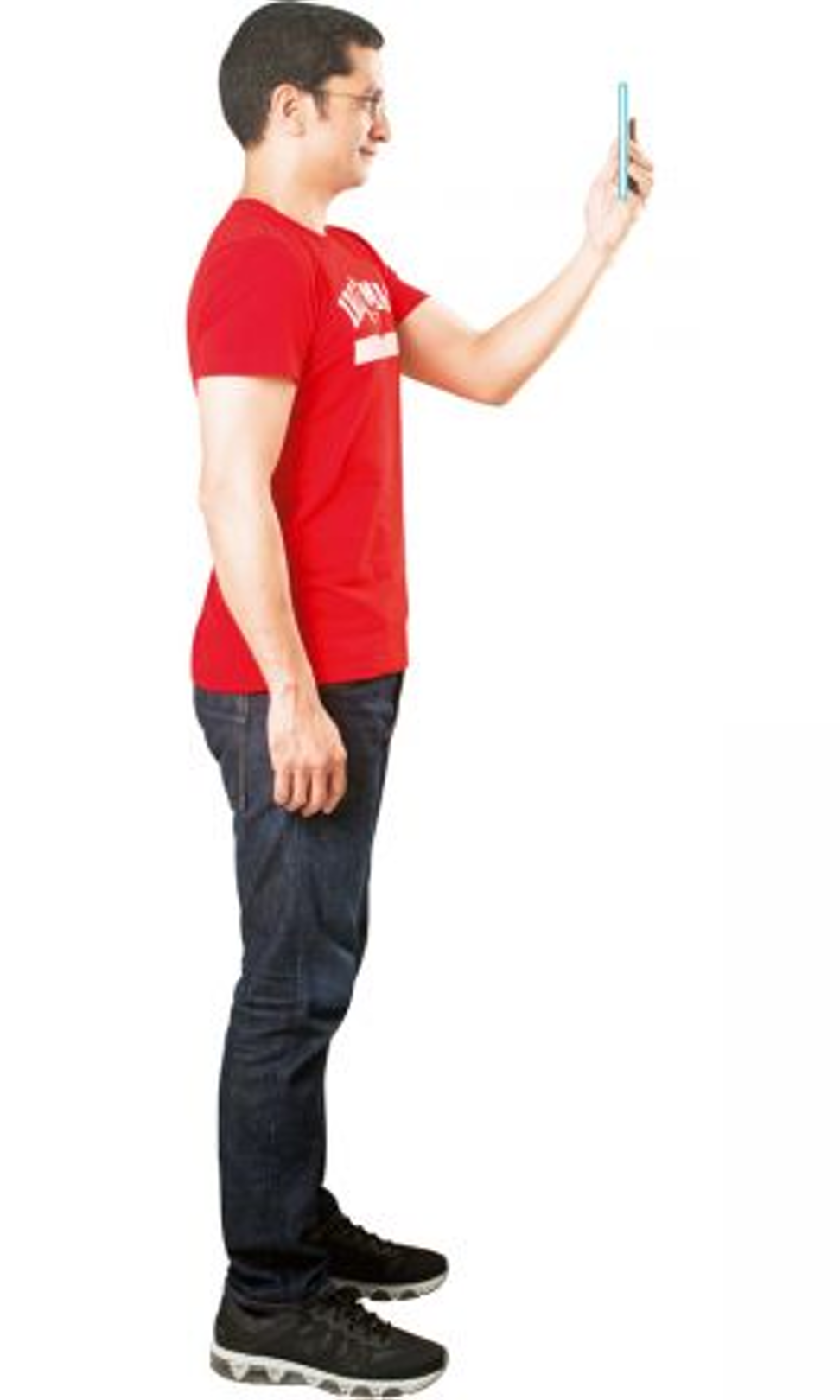
Is your posture spine-friendly?
Maintaining good posture can help prevent and alleviate back and neck aches and pains
By Eveline Gan
If you experience pain in at least one part of your body at work — that is, the neck, shoulders or lower back — you’re not alone. In a study by Singapore General Hospital, it was reported that about seven in 10 office workers here suffer from that.
“The lack of movement and being stuck in a fixed position for long hours every day can lead to many chronic conditions such as headaches, and neck and back pain,” said Dr David Lim, chiropractor and director of Wellness for Life Chiropractic.
Achieving and maintaining good postures can prevent or alleviate those niggling aches and pains. For a start, try these posture tips from Dr Lim. You may feel discomfort initially as your body isn’t used to the new positions. The discomfort may also signal an underlying spinal problem that needs professional attention. Seek help if pain persists or worsens after two weeks.
When working at your desk
Sitting in a hunched position can cause permanent damage in the spine over time, and result in chronic neck and back pain, said Dr Lim. Poor office ergonomics, such as the incorrect positioning of the computer screen and desk height, can worsen aches and pains.
To function well while seated, the body needs three key things: Optimal posture, movement and stretching. But maintaining this sitting posture does not help if you are stuck in the same position for a long time. Refrain from staying in the same position for more than 30 minutes at a stretch. Shift position,or get up and stretch your muscles, advised Dr Lim.
If you need to sit at your desk for long hours, try these stretches:
• Look up with your head tilted back. Stretch your neck backwards.
• Push your shoulders and arms back.
• Squeeze your shoulder blades together.
When using a mobile device
Constantly looking down at a mobile device can lead to the smart phone syndrome aka neck pain caused by craning the neck forward for extended periods of time. When the head tilts forward, it leans away from its centre of gravity. For every inch of forward head position, the weight of the head increases by an additional five kilos, said Dr Lim.
According to him, the constant forward tilt of the head can cause damaging stress on the spine and nerves. Repeatedly lifting mobile gadgets using one hand can also strain the neck and shoulder muscles.
Do this instead:
Instead of tilting your head down, Dr Lim suggested bringing the device up to your eye level. This will reduce your forward head posture that can strain your upper back and neck muscles. Take breaks and stretch as often as possible.
When standing
A poor standing posture stresses the lower back and shoulders. Avoid this classic posture: Leaning your head forward, hunching or rounding your shoulders, curving your spine and locking your knees, said Dr Lim.
In a correct standing posture, the shoulders should be relaxed and tucked back, and the spine should look straight from behind. The belly and buttocks should also be tucked in, rather than protrude, while the legs are at shoulder-width apart.
Sensible shoes that support the arches of the feet will also relieve pressure from the lower back.
When carrying a bag
When a bag is slung over one shoulder, most people have the unconscious habit of raising the shoulder to prevent the straps from slipping off, said Dr Lim. Favouring one shoulder can overwork muscles and lead to permanent poor posture.
Carrying a bag that weighs over 10kg, which is not an uncommon weight for many women, has the potential to cause injury. “Over time, imbalances in posture can cause an unequal strain on the muscles, tendons, nerves and ligaments, leading to back and neck aches. It may also increase the risk of scoliosis (side-ways curve of the spine) or kyphosis (hunchback),” said Dr Lim.
Do this instead:
Switch sides every few minutes or wear the bag diagonally across your chest. This loads the core muscles rather than the neck and shoulders. Another option is to distribute the weight between two small bags.
The American Chiropractic Association recommends that a handbag weighs no more than 10 per cent of its owner’s weight. “Even if you find the most posture-friendly bag, the bag’s load on your spine can still create compensating shifts in your posture, leading to headaches, neck and shoulder pain, and permanent poor posture,” said Dr Lim.
Features of a posture-friendly bag:
• Minimalist: No heavy buckles, straps or unnecessary compartments that add weight to the bag.
• Wide straps: They help distribute the load effectively.
• Small and lightweight: Choose compact bags made of materials such as canvas or vinyl. You won’t chuck unnecessary things into it that weigh you down.
• Wheels: Consider a trolley carrier with wheels for heavy loads like groceries.




